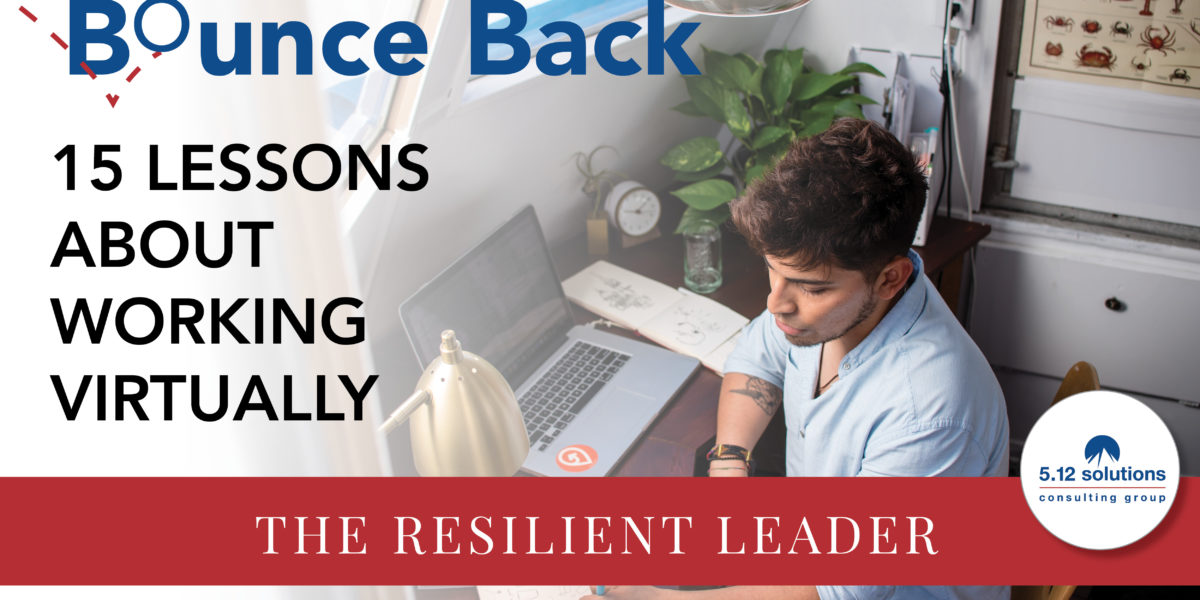My team and I have always been obsessed with helping people succeed at work.
Since the pandemic began, we turned much of that focus toward the virtual environment.
Even though we had a deep expertise of leading and working remotely, having created a virtual coaching platform called Coachmetrix, we’ve continued to evolve our thinking.
Over the course of the past six months, I have personally coached over 500 hours in 1-1 executive coaching sessions, and worked with over 1,000 leaders in virtual coaching and training programs. Collectively, my team has exceeded those numbers 10 times over.
As a result, we’ve learned a lot – including the following 15 lessons about working and leading in a virtual environment.
Lesson #1: People are (more) productive in a virtual environment.
Lesson #2: 33% of your workforce will never return to working onsite.
Lesson #3: The pace of working virtually is relentless.
Lesson #4: The relentless pace is reducing the effectiveness of coaching and mentoring, as measured consistently across client 360 data over the past six months.
Lesson #5: It’s more difficult for new employees to build connection in a virtual environment. New team members are being hired without having met others in person. It makes onboarding harder, and in an assessment of 360 data across clients, there is a noticeably inconsistent expression of leadership from those new employees who are in leadership roles.
Lesson #6: The hybrid environment, where some employees are required to be onsite and others are required to work from home, can create unintentional rifts.
Lesson #7: More humanity exists in the remote workplace. The veil of the corporate office and the status and positional power of executive leadership titles are lessened when we see leaders in their homes, with their kids and cats and dogs, and just being…human.
Lesson #8: Issues linger for longer periods of time as they are not resolved as quickly as when people are together seeing each other every day.
Lesson #9: It’s taking longer for new leaders (from outside the organization) to create psychological safety, especially in organizations with engineering mindsets which tend to be more logic-focused, objective and skeptical.
Lesson #10: Leaders need to consciously engineer wins along the way. This isn’t a sprint. It’s a marathon. In the long run, we must purposefully and intentionally find ways to make sure people feel valued.
Lesson #11: Valuing people must go beyond just organizational benefits. Flexibility, Employee Assistance Program and family leave are all important. And, in the relentless pace of remote working, don’t forget to personalize your recognition efforts.
Lesson #12: Leaders need to think non-traditionally about working hours. Between homeschooling, taking care of elderly people and other personal constraints, the nine-to-five concept doesn’t work anymore.
Lesson #13: Leaders may be over rotating on empathy, care and listening. At the end of the day, we still have a business to run and it serves no one if we aren’t running it successfully.
Lesson #14: It takes more cycles for leaders to communicate a consistent message because people attach their own meaning to unexpected events based on their individual needs. As unexpected events increase in duration and intensity, and decrease in controllability, leaders must be more intentional, frequent and consistent with their communication to create alignment.
Lesson #15: In crisis, leaders need to strike the balance between optimism and reality. If you are too optimistic in the early phases of a crisis, you will lose credibility. If your message lacks optimism, no one will want to follow you.
If you are interested in learning more, join us for one of our free Bounce Back Masterclasses, including the Building Resilience session on December 4. During this 60-minute Masterclass, I’ll share with you what we are learning about resilience and how it aligns with a leader’s ability to excel. You’ll walk away with actionable steps to build your resilience muscle and guide your team members to do the same.

